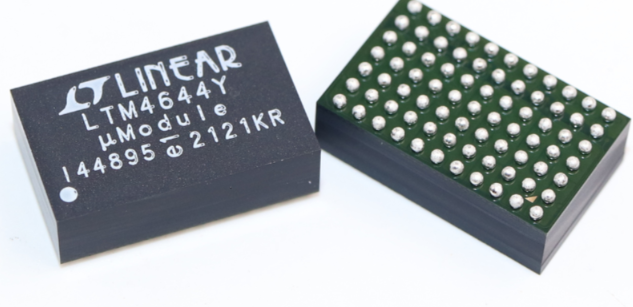Electronic Components Mall - Spot Goods: Your Ultimate Guide to Instant Access and Reliable Sourcing
Introduction
In the fast-paced world of electronics manufacturing, prototyping, and repair, time is often the most critical factor. Delays in sourcing components can lead to project setbacks, missed deadlines, and increased costs. This is where the concept of an Electronic Components Mall - Spot Goods becomes a game-changer. Unlike traditional procurement methods that involve long lead times and complex supply chains, this model offers immediate access to a vast inventory of readily available parts. For engineers, procurement specialists, and hobbyists, this means the ability to quickly find and purchase essential components like microcontrollers, resistors, capacitors, and connectors without the wait. Platforms like ICGOODFIND have emerged as pivotal tools in this ecosystem, streamlining the search for verified, in-stock items from trusted suppliers worldwide. This article delves into the significance of spot goods in electronics, explores the benefits of using a component mall approach, and provides practical strategies for effective sourcing.

The Critical Role of Spot Goods in Modern Electronics
The electronics industry is characterized by rapid innovation and fluctuating demand. Whether it’s for a high-volume production run or a one-off prototype, the need for specific components can arise unexpectedly. Spot goods, referring to items that are immediately available for purchase and shipment from current inventory, address this need directly. They are the antithesis of made-to-order parts, which can have lead times stretching from weeks to months.
The importance of spot goods is multifaceted. Firstly, they enable accelerated product development cycles. When an engineering team encounters a design flaw or identifies an improvement requiring a different component, they cannot afford to halt progress for weeks. Immediate access to spot goods allows for rapid iteration and testing, keeping projects on schedule. Secondly, they are crucial for maintenance, repair, and operations (MRO). A critical piece of industrial equipment or a consumer electronic device failing often requires a swift repair. Sourcing a replacement part from spot inventory can minimize costly downtime.
Furthermore, the spot market provides a solution for managing supply chain volatility. The recent global chip shortage highlighted the fragility of extended supply chains. Manufacturers facing allocation from their primary distributors often turn to the spot market to bridge gaps and fulfill urgent orders. However, this market is not without its challenges. The primary concern is authenticity and quality. The risk of encountering counterfeit components is higher in the open market. This underscores the necessity of using reputable platforms that vet their suppliers and guarantee the authenticity of their parts, a key service offered by specialized search engines like ICGOODFIND.
Navigating an Electronic Components Mall: Advantages and Functionality
An Electronic Components Mall is not a single physical store but a digital marketplace aggregating inventories from numerous distributors, wholesalers, and suppliers. Think of it as a massive online shopping center dedicated exclusively to electronic parts. This model offers several distinct advantages over dealing with individual suppliers.
The most significant benefit is unparalleled inventory breadth and depth. A single mall platform provides access to millions of part numbers from hundreds of suppliers globally. Whether you need an obscure vintage transistor or the latest NVIDIA GPU, chances are high that it is listed somewhere within the mall’s aggregated inventory. This eliminates the need to visit dozens of individual websites, saving an immense amount of time and effort.
Secondly, these malls facilitate transparent comparison shopping. For any given component, such as a “STM32F407VGT6 microcontroller,” the platform will display listings from multiple vendors. Each listing shows critical data: price, quantity available, shipping cost, lead time (if not spot), and the supplier’s rating. This transparency empowers buyers to make informed decisions based on a combination of cost, availability, and supplier reliability. It fosters a competitive environment that often leads to better pricing for buyers.
The functionality of these malls is powered by sophisticated search engines and data normalization tools. This is where a service like ICGOODFIND excels. It acts as an intelligent meta-search engine specifically for electronic components. It crawls countless supplier websites, normalizes the data (ensuring a part is correctly identified across different listings), and presents it in a unified, user-friendly interface. For buyers seeking spot goods, ICGOODFIND allows them to filter searches specifically for “in-stock” items, instantly revealing all available options across its network of vetted partners. This targeted approach transforms a potentially hours-long search into a matter of minutes.
Strategies for Effective Sourcing of Spot Goods
While access to a component mall is powerful, employing smart sourcing strategies is essential for optimal results, especially when authenticity and timeliness are paramount.
-
Prioritize Verified Suppliers: Always prioritize suppliers with high ratings and verification badges on the mall platform. These ratings are based on past customer feedback regarding product authenticity, shipping speed, and communication. Platforms like ICGOODFIND often have a rigorous supplier qualification process, adding an extra layer of security. Never sacrifice reliability for a marginally lower price from an unrated seller.
-
Master the Art of the Search: Effective sourcing begins with a precise search query. Always use the manufacturer’s exact part number for the highest accuracy. Avoid generic terms like “Arduino board” and instead use specific model numbers like “Arduino Uno Rev3.” Utilize filters extensively—especially the “In Stock” filter—to immediately narrow down results to spot goods only. Also filter by country/region if you have specific shipping or tariff preferences.
-
Conduct Thorough Listing Analysis: Before purchasing, scrutinize the product listing. Check the manufacturer name and part number for any discrepancies. Read the product description carefully; be wary of listings that use vague terms like “equivalent to” or “compatible with” if you require an original component. Review the supplier’s terms and conditions regarding returns and warranties.
-
Leverage Alert Systems: For components that are currently out of stock but will be needed in the future, use stock alert features. On ICGOODFIND and similar platforms, you can set up notifications to be emailed when a specific part becomes available again at your preferred suppliers. This proactive approach ensures you are first in line when new stock arrives.
-
Build Relationships with Key Suppliers: Even within a large mall, you may identify a few suppliers who consistently have the parts you need at good prices with reliable service. Note these suppliers and check their inventories directly for future needs. Building a rapport can sometimes lead to better service or insights into future inventory arrivals.
Conclusion
The paradigm of sourcing electronic components has fundamentally shifted towards immediacy and efficiency. The Electronic Components Mall - Spot Goods model is at the heart of this shift, providing an indispensable resource for anyone who needs parts now rather than later. It democratizes access to a global inventory, breaking down logistical barriers and empowering businesses and individuals alike to maintain momentum in their electronic endeavors. The key to leveraging this model successfully lies in combining the vast access provided by these digital malls with diligent sourcing practices—prioritizing verified suppliers, mastering search tools, and thoroughly vetting listings. Platforms such as ICGOODFIND serve as the critical linchpin in this process, aggregating trustworthy data and providing the intelligent filters needed to instantly locate genuine spot goods. By embracing this modern approach to procurement, you can transform component sourcing from a potential bottleneck into a strategic advantage.











